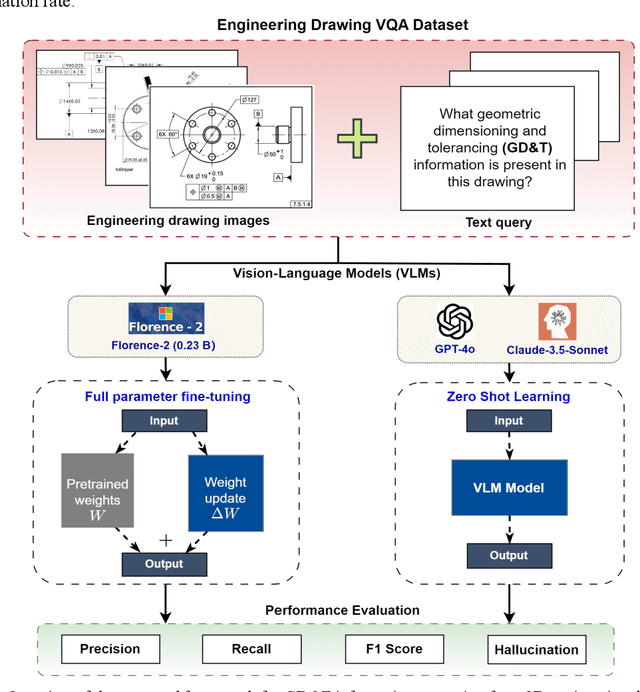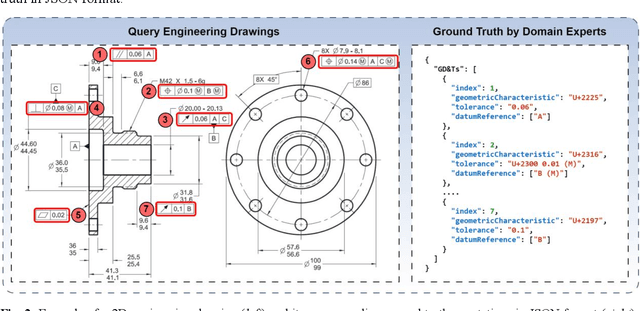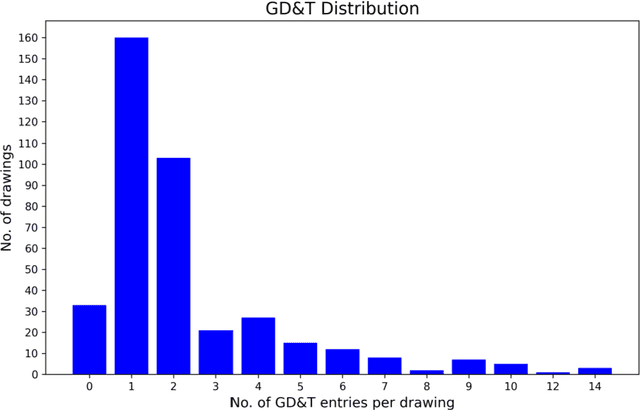Ye Han Ng
Fine-Tuning Vision-Language Model for Automated Engineering Drawing Information Extraction
Nov 06, 2024



Abstract:Geometric Dimensioning and Tolerancing (GD&T) plays a critical role in manufacturing by defining acceptable variations in part features to ensure component quality and functionality. However, extracting GD&T information from 2D engineering drawings is a time-consuming and labor-intensive task, often relying on manual efforts or semi-automated tools. To address these challenges, this study proposes an automated and computationally efficient GD&T extraction method by fine-tuning Florence-2, an open-source vision-language model (VLM). The model is trained on a dataset of 400 drawings with ground truth annotations provided by domain experts. For comparison, two state-of-the-art closed-source VLMs, GPT-4o and Claude-3.5-Sonnet, are evaluated on the same dataset. All models are assessed using precision, recall, F1-score, and hallucination metrics. Due to the computational cost and impracticality of fine-tuning large closed-source VLMs for domain-specific tasks, GPT-4o and Claude-3.5-Sonnet are evaluated in a zero-shot setting. In contrast, Florence-2, a smaller model with 0.23 billion parameters, is optimized through full-parameter fine-tuning across three distinct experiments, each utilizing datasets augmented to different levels. The results show that Florence-2 achieves a 29.95% increase in precision, a 37.75% increase in recall, a 52.40% improvement in F1-score, and a 43.15% reduction in hallucination rate compared to the best-performing closed-source model. These findings highlight the effectiveness of fine-tuning smaller, open-source VLMs like Florence-2, offering a practical and efficient solution for automated GD&T extraction to support downstream manufacturing tasks.
Automatic Feature Recognition and Dimensional Attributes Extraction From CAD Models for Hybrid Additive-Subtractive Manufacturing
Aug 14, 2024Abstract:The integration of Computer-Aided Design (CAD), Computer-Aided Process Planning (CAPP), and Computer-Aided Manufacturing (CAM) plays a crucial role in modern manufacturing, facilitating seamless transitions from digital designs to physical products. However, a significant challenge within this integration is the Automatic Feature Recognition (AFR) of CAD models, especially in the context of hybrid manufacturing that combines subtractive and additive manufacturing processes. Traditional AFR methods, focused mainly on the identification of subtractive (machined) features including holes, fillets, chamfers, pockets, and slots, fail to recognize features pertinent to additive manufacturing. Furthermore, the traditional methods fall short in accurately extracting geometric dimensions and orientations, which are also key factors for effective manufacturing process planning. This paper presents a novel approach for creating a synthetic CAD dataset that encompasses features relevant to both additive and subtractive machining through Python Open Cascade. The Hierarchical Graph Convolutional Neural Network (HGCNN) model is implemented to accurately identify the composite additive-subtractive features within the synthetic CAD dataset. The key novelty and contribution of the proposed methodology lie in its ability to recognize a wide range of manufacturing features, and precisely extracting their dimensions, orientations, and stock sizes. The proposed model demonstrates remarkable feature recognition accuracy exceeding 97% and a dimension extraction accuracy of 100% for identified features. Therefore, the proposed methodology enhances the integration of CAD, CAPP, and CAM within hybrid manufacturing by providing precise feature recognition and dimension extraction. It facilitates improved manufacturing process planning, by enabling more informed decision-making.
 Add to Chrome
Add to Chrome Add to Firefox
Add to Firefox Add to Edge
Add to Edge